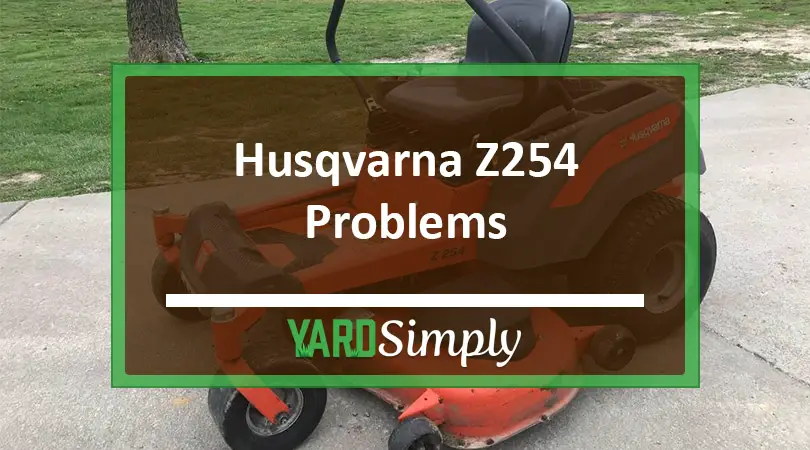As a seasoned expert with extensive experience in lawn care and mechanical maintenance, I bring a deep understanding of common Husqvarna Z254 problems.
Drawing from years of hands-on experience and thorough technical knowledge, I’ll guide you through the most effective solutions to ensure your mower operates at its best.
Trust in this expertise as you read on to navigate the challenges of Husqvarna Z254 maintenance confidently and efficiently.
Quick Summary
- Starting Problems: Issues like corroded battery terminals, electronic drain, or dead cells, along with ignition switch faults and clogged air filters, can hinder the starting of the Husqvarna Z254 mower. Regular battery maintenance, ignition switch inspections, and air filter cleaning are crucial for resolving these issues.
- Mower Dying During Operation: This can be caused by bad gasoline, fuel line obstructions, or cooling fin damage. Solutions include using fresh gasoline with stabilizers, cleaning fuel lines annually, and inspecting and cleaning cooling fins.
- Blade Engagement Issues: Problems such as engine belt wear and component misalignment can affect blade engagement. Regularly inspecting the engine belt and ensuring proper alignment of mower components can address these issues.
- Excessive Smoke and Hydrostatic Transmission Weakness: Low oil levels, burning oil, damaged components, low hydraulic oil, old gasoline, and belt and pulley issues can cause excessive smoke and weak hydrostatic transmission. Proper oil maintenance, addressing oil leaks, and ensuring the integrity of the belt and pulley system are essential for optimal performance.
Starting Issues with Husqvarna Z254
Battery Problems: The mower might struggle to start due to battery-related issues like corroded terminals, electronic drain, or dead cells.
Corrosion on terminals can impede electrical connectivity, an electronic drain can deplete the battery’s charge over time, and dead cells can render the battery ineffective.
Ignition Switch Faults: If the ignition switch is faulty, it can prevent the electrical circuit from completing, thus hindering the engine from starting. This could be due to internal wear and tear, a loose connection, or damage to the switch.
Air Filter Complications: A clogged, or dirty air filter can restrict the airflow to the engine, making it hard for the engine to start. Without adequate air, the fuel-air mixture in the engine’s combustion chamber is disrupted, leading to starting difficulties.
Solutions
Battery Check and Maintenance:
- Clean corroded terminals with a wire brush.
- Charge the battery if it’s been drained.
- Replace the battery if it has dead cells or is old.
Ignition Switch Inspection:
- Check the connection to ensure it’s secure.
- Inspect the switch for signs of wear or damage.
- Replace the ignition switch if it’s faulty.
Air Filter Maintenance:
- Remove and tap the air filter against a flat surface to remove loose dirt.
- Avoid cleaning with petroleum-based solvents or compressed air.
- Replace the air filter if it’s damaged or excessively dirty.
Learn More: How To Start Bad Boy Mower Today: Easy Guide
Mower Dies During Operation
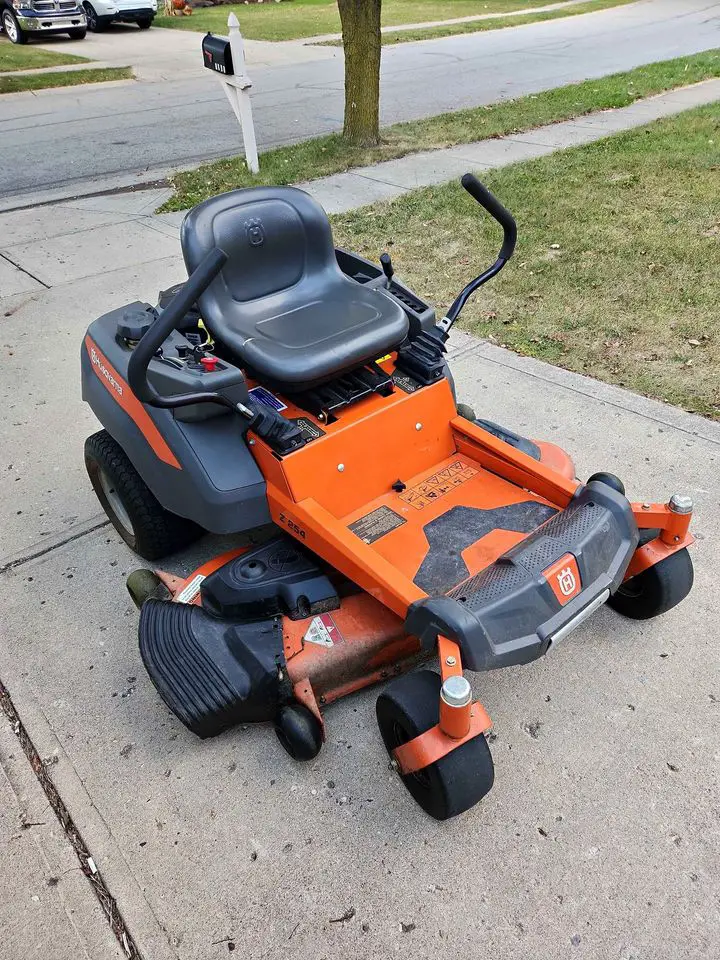
Bad Gasoline: If your mower starts smoking, making odd sounds, or stalls suddenly, bad gasoline could be to blame. This can lead to inefficient combustion and excessive fuel consumption.
Fuel Line Obstructions: The mower might shut down if the fuel line is blocked, which can happen over time. This may manifest as difficulty starting, a loss of power, or an apparent lack of fuel flow to the engine.
Cooling Fin Damage: Damage to the cooling fins can cause the mower to overheat and shut off. Dirt and debris can accumulate and block the fins, preventing proper heat dissipation.
How to Troubleshoot
Bad Gasoline:
- Use fresh, unleaded gasoline with an octane rating of at least 87 and no more than 10% ethanol.
- Add a stabilizer to the fuel to preserve its quality.
- Regularly check and maintain spark plugs.
Fuel Line Maintenance:
- Inspect the fuel line for obstructions and clear any blockages.
- Perform annual cleaning of the fuel lines to prevent buildup.
- Consult the mower’s manual for specific cleaning instructions.
Cooling Fin Inspection:
- Check the cooling fins visually for any signs of damage.
- Clean away any debris or dirt that could obstruct airflow.
- If damage is found, seek professional repair or contact Husqvarna for assistance.
Also Read: Bad Boy Mower Starts Then Dies
Blade Engagement Issues
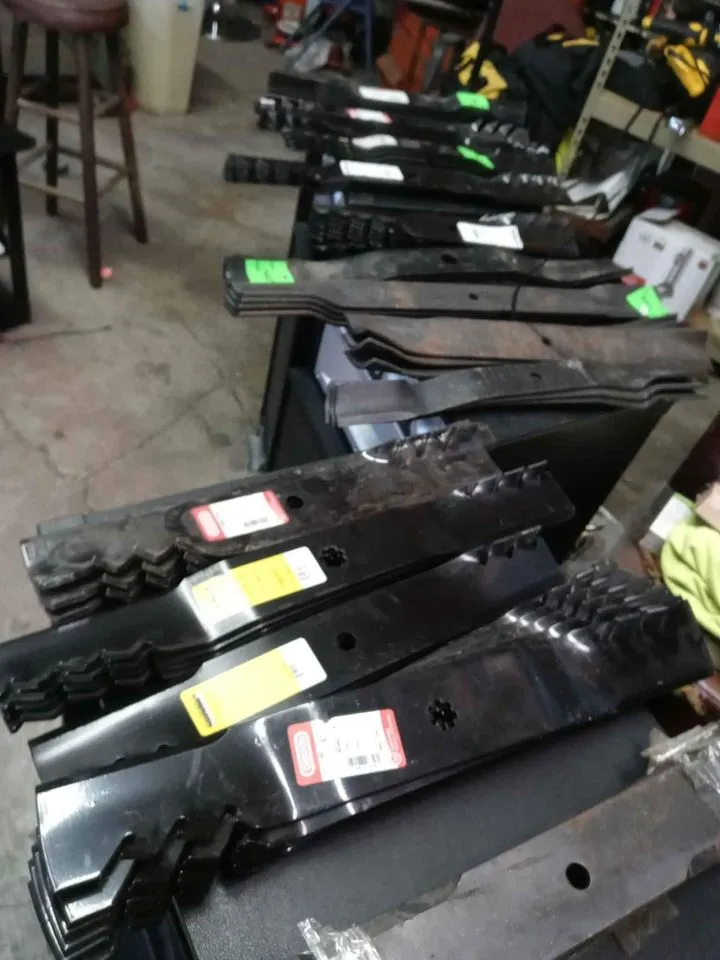
Engine Drive Belt Wear: Regular use can cause the engine belt to wear out. This wear might present as visible damage, a shiny appearance on the belt, or grass buildup between pulleys.
A worn belt may fail to transmit power effectively, leading to the blades not engaging properly.
Component Misalignment: Misaligned mower components, such as blades or the mower deck, can also cause engagement issues. This might be due to improper adjustment or leveling, affecting the mower’s cutting performance.
How to Troubleshoot
Engine Belt Maintenance:
- Regularly inspect the engine belt for signs of wear, such as cracks or a glazed appearance.
- Replace the belt if it shows significant wear or damage.
- Ensure that the belt is properly seated and not chafing against any components.
Component Alignment:
Adjust blades and ensure the deck is leveled for optimal performance.
- Check and align handles if they are misaligned.
- Refer to the user manual for specific adjustment instructions.
- If issues persist, seek professional assistance.
Excessive Smoke from Husqvarna Z254
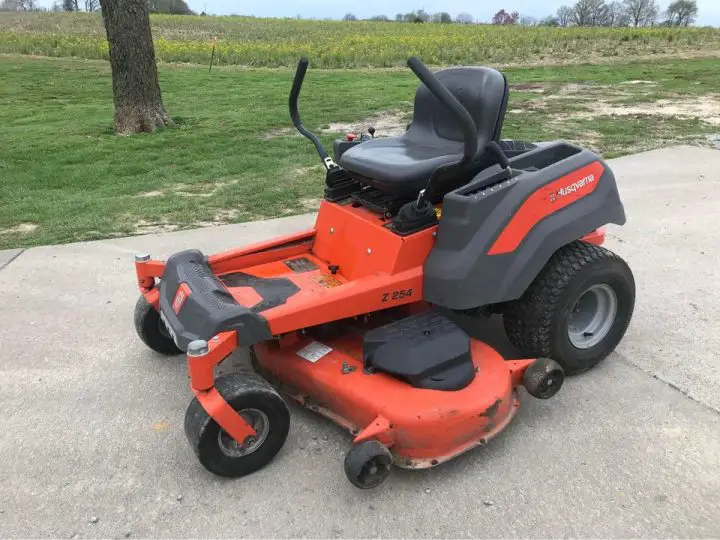
Low Oil Levels: Running the mower with insufficient oil can cause the engine to overheat and emit excessive smoke. This is often a result of oil consumption or leaks.
Burning Oil: If oil is burning within the engine, it can produce excessive smoke. This could be due to leaks, such as around valve covers, or damaged components like gaskets or spark plug wires.
Damaged Components: Certain faulty components, like a blocked air filter, low engine oil, or a defective engine breather assembly, can lead to excessive smoke as they disrupt normal engine operation.
How to Troubleshoot
Maintain Proper Oil Levels:
- Regularly check the oil level with the dipstick.
- Use Husqvarna’s Full Synthetic 10W-30 4-Stroke engine oil for optimal results.
- Check oil levels each time before using the mower.
Address Burning Oil:
- Inspect valve covers and clean the engine to locate oil leaks.
- Check for damaged gaskets or spark plug wires.
- Repair or replace any faulty components to stop oil leaks.
Inspect and Replace Faulty Components:
- Check the air filter and replace it if it’s clogged.
- Ensure the engine oil is at the correct level and top up if necessary.
- Examine the engine breather assembly and replace it if it’s defective.
Hydrostatic Transmission Weakness
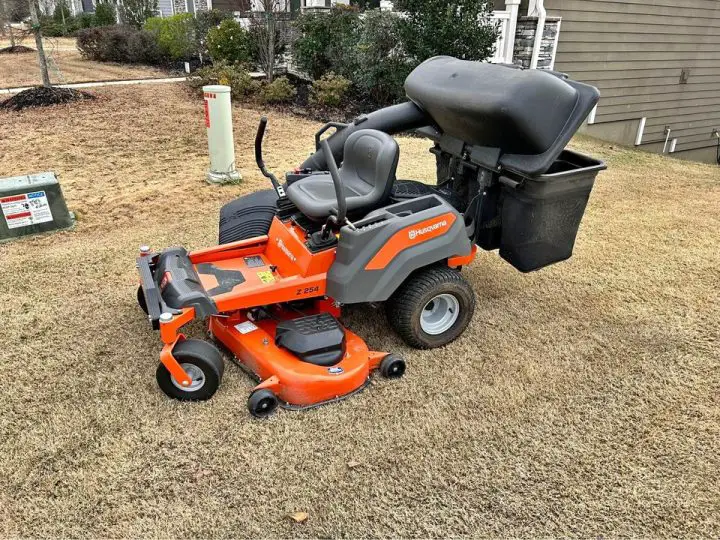
Low Hydraulic Oil: Insufficient hydraulic oil can cause the transmission to underperform, leading to reduced power and efficiency. This can happen due to leaks or simply due to oil not being topped up regularly.
Old Gasoline: Stale gasoline can affect the engine’s performance, which in turn can impact the hydrostatic transmission. Over time, gasoline degrades and loses its effectiveness.
Belt and Pulley Issues: Problems with the belt and pulley system can lead to inefficient power transmission from the engine to the hydrostatic transmission, causing weakness in the mower’s movement.
How to Troubleshoot
Maintain Hydraulic Oil Levels:
- Use the recommended SAE 20W-50 engine oil.
- Check and maintain proper oil levels.
- Change the hydraulic oil every 50 hours of operation or annually.
Use Fresh Gasoline:
- Replace old gasoline with fresh fuel.
- Add a stabilizer to extend the shelf life of the gasoline.
- Remember that gasoline typically lasts 6 months to 1 year.
Belt and Pulley Maintenance:
- Inspect the belt for wear and tear, and replace if needed.
- Check the idler pulley for proper function and alignment.
- Ensure correct belt tension for optimal performance.
- Use genuine Husqvarna parts for replacements.
Summary
Troubleshooting your common Husqvarna zero turn mower problems can be a straightforward process when equipped with the right knowledge.
By addressing issues such as starting problems, mower dying during operation, blade engagement issues, excessive smoke, hydrostatic transmission weakness, and uneven cutting patterns, you can keep your mower in top condition and your lawn looking its best.
Remember, regular maintenance and timely repairs are the keys to ensuring the longevity and performance of your Husqvarna Z254 mower.
Husqvarna Z254 Problems – Frequently Asked Questions
What are the most common problems with zero turn mowers?
Zero-turn mowers are often plagued by issues such as improper deck leveling, belt misalignment, and blades that fail to engage. Issues with clogged grass chutes, gas leaks, and steering problems can also arise. Regular maintenance and proper operation of the mower can help prevent these issues.
How long does a Husqvarna zero turn mower last?
With regular use and proper care, a Husqvarna zero turn mower can last around 600-800 hours or more, with a life expectancy of up to 15 years.
Is Husqvarna Z254 a commercial mower?
The Husqvarna Z254 Zero Turn Mower has cutting-edge design, proven performance and stand-out features, making it a commercial mower in a residential package.
What is the supply problem with Husqvarna?
Husqvarna is facing production delays due to an increased complexity of materials and a high number of new products, causing a supply problem.
Where are Husqvarna lawn mowers made?
Husqvarna lawn mowers are proudly manufactured in the United States, at Husqvarna Consumer Outdoor Products N.A., Inc.

